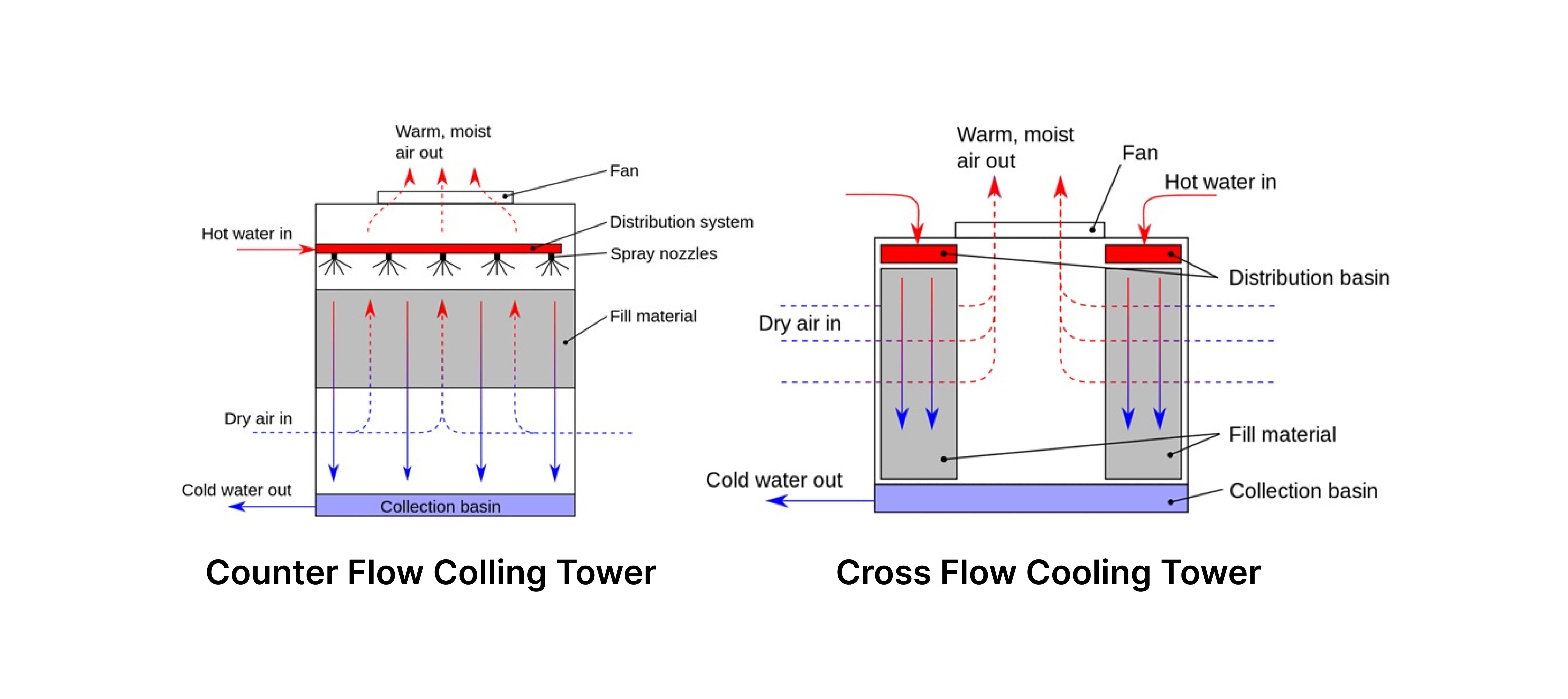The primary task of a cooling tower is to reject heat into the atmosphere.
This heat rejection is accomplished through the natural process of evaporation that takes place when air and water is brought into direct contact in the cooling tower. The evaporation is most efficient when the maximum water surface area is exposed to the maximum flow of air in the longest possible period of time. Cooling towers are designed in two different configurations, CounterFlow and CrossFlow. The specific configuration indicates the direction of the air flow in relation to the water flow.
WATER DISTRIBUTION SYSTEMS
Counterflow towers in general use low pressure spray nozzles to divide the hot water equally over the infill surface in fine droplets. A drift eliminator section above the water distribution rejects all the water in liquid form and keeps this in the circulating system. A nozzle distribution is sensitive to changes in water flow thus it affects the overall efficiency. The air movement is vertically through the fill in counter flow to the downwards fall of the water. Counterflow towers have in general a smaller footprint than crossflow towers but require a higher pump head due to the typical distribution system with nozzles.
Crossflow towers use a distinctly different type of water distribution. The hot water is distributed to the fill by gravity thought perforated basinssometimes supported by metering orifices in the floor plate of the distribution basin. The water runs down over the infill surface as a fine film. The pump head required is in general the tower height as static lift. The air movement is horizontally through the infill, across the downward fall of the water.
AIR FLOW DISTRIBUTION SYSTEMS
In crossflow towers the air comes into the infill over the total infill height.Due to the fan configuration on top of the tower the air distribution is not equal over the whole inlet surface. In counterflow towers the air passes through the air inlet louvers and bends into the infill section.The inlet louvers reject splash water coming out of the tower and create a slightly higher airside pressure drop.
TOWER CHARACTERISTICS
CROSSFLOW TOWERS
- Low pumping head, thus lower operational cost.
- Accepts variations in water flow without changing the distribution system
- Easy maintenance access to vital parts.
- Reduced drift loss due to the absence of water droplets.
- Lower in noise due to absence of water noise.
‐ Larger foot print of the tower.
‐ Tendency of uneven air distribution through the infill due to the large inlet surface.
COUNTER FLOW TOWERS
- The coldest water comes in contact with the driest air maximizing tower performance.
- Smaller foot print of the tower
- Smaller tower height due to compact infill.
- More efficient air/water contact due to droplet distribution.
‐ Noise production due to spraying and falling water.
‐ Direct sunlight in the tower basin might trigger algae growth.
‐ Water distribution system might clog due to water borne debris.
‐ Uneasy maintenance of water distribution system.
‐ Drift loss due to droplet distribution system.
 Chat with us
Chat with us

